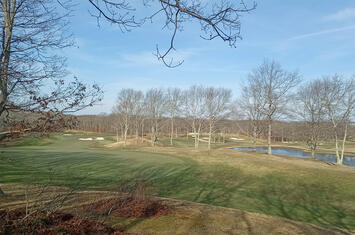
When an 18-hole golf club—private and exclusive—opens in the next few years at the controversial Lewis Road luxury development in East Quogue, it will mark the latest and probably the last of 135 years of links building on and around the South Fork of Long Island. This will bring to 20 the number of golfing options, not including some favorites on the North Fork.
But long before it got to No. 20, the Hamptons made history with No. 1.
Shinnecock Hills, oldest incorporated golf club in the U.S., was the start of a first-wave of “summer colony” courses to populate the stretch. It took its name—and some say its land—from a native tribe that arguably had been hornswoggled by settlers decades earlier. But Shinnecock’s pedigree with golf professionals is solid—it will host its fourth U.S. Open tournament in 2026.
With the extended Long Island Rail Road opening up the territory to a new seasonal population, other courses followed in short order in the 1890s: the Westhampton Country Club (relocated in 1915), Quogue Field Club, Southampton Golf Club, the Maidstone Club in East Hampton and Gardiners Bay Country Club on Shelter Island. A decade later came National Golf Links, neighboring Shinnecock Hills on the Peconic Bay side.
The next burst of course creation occurred in the Roaring Twenties. The Bridgehampton Club opened nine holes near that village, south of the Montauk Highway. Soon, nine holes were carved out of woodlands east of Sag Harbor for a public club. Another “executive” course, the Shelter Island Golf Club, was opened to general play. And in 1927, Carl Fisher’s grand resort vision for Montauk featured the initial iteration of today’s celebrated Downs layout.
As noted in William Quinn’s pictorial history, “America’s Linksland: A Century of Long Island Golf” (2002), several of the coastal courses were heavily damaged in the September 1938 hurricane that struck the area. The Quogue club lost a few holes and ultimately shortened to nine. Shinnecock Hills, meantime, had to shift some holes that once straddled the railroad tracks northward as the Sunrise Highway was extended into town.
New links activity went quiet for decades, awakened only by the golf craze of the 1960s. First came nine new public holes at Poxabogue in Sagaponack, in 1962. The membership course at Noyac Golf Club signaled new wealth in the mid-‘60s, fronting a longtime bay boating community and existing, it says, as a “hidden gem” for years until a course redesign (Noyac is the course depicted in the photo).
Meanwhile, tucked away in a forest of upper Westhampton, Hampton Hills Country Club opened in 1965. Remarkably, given later battles over the surrounding Pine Barrens, it attracted little controversy. (However, later proposals to build hundreds of homes along the course and by the Teamsters union to build 2,000 homes on property it held nearby did not fly.) Completing this era, Suffolk County in 1972 created Indian Island Golf Course around what had been a huge Riverhead duck farm.
Read the rest of this piece at Tim W. Ferguson blog.
Tim W. Ferguson, the former editor of Forbes's Asia edition, writes about business, economics and society.












